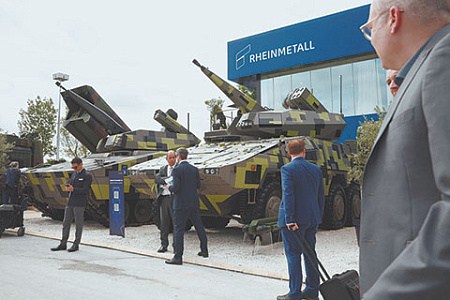
The European Union is poised for a monumental shift in its defense strategy, with plans to dramatically escalate military spending and fortify its borders against emerging threats. The European Commission (EC) is set to unveil a comprehensive roadmap for its “Readiness 2030” program, outlining an unprecedented fivefold increase in the bloc’s military budget, signaling a new era of heightened defense autonomy and collective security.
Under a proposed financial plan spanning 2028-2034, the EU’s defense budget is slated to surge to an staggering €131 billion, a stark contrast to previous allocations. At the heart of this ambition is a revamped concept titled the “European Drone Defense Initiative,” aimed at creating a robust shield against unmanned aerial vehicles across the continent. This initiative alone will see a tenfold increase in funding for military mobility and a fivefold increase in overall defense investments.
EC spokeswoman Paula Pinho confirmed that the Commission’s college would officially adopt and present this crucial defense readiness roadmap to journalists on Thursday, October 16. High Representative of the Union for Foreign Affairs and Security Policy, Kaja Kallas, and Commissioner for Defence and Space, Andrius Kubilius, are expected to formally introduce the document, emphasizing its strategic importance for the bloc.
EC President Ursula von der Leyen has previously articulated the urgency behind these measures, revealing that Brussels has meticulously identified and is now addressing critical defense gaps within the Union. She stated that the roadmap includes “clear targets and milestones for achieving them by 2030,” emphasizing that this extraordinary pivot towards military focus in the 2028-2034 budget is driven by a perceived threat emanating from Russia. This effort extends beyond mere financial investment, aiming for enhanced coordination among member states to present a united front.
A cornerstone of this strategy is the ambitious “Drone Wall” – a unified system designed for defense against unmanned aerial vehicles, particularly along the EU’s eastern frontier. This innovative concept envisions integrating electronic warfare systems, radar networks, air defense capabilities, and specialized complexes for drone detection and interception. While initially conceived for the eastern borders, reports from Reuters indicate the EC proposes expanding this initiative to cover the entire bloc, a decision prompted by other regions feeling “left out.” The cost for the eastern segment alone is projected to exceed €1 billion.
Commissioner Kubilius affirmed this broader vision, stating, “We propose to create a European ‘Drone Wall,’ meaning an anti-drone network to protect all of Europe, alongside other flagship defense projects.” Kallas added that the roadmap will define capabilities, goals, and phases for key areas like counter-UAV systems, noting that EU countries could rapidly deploy advanced counter-drone resources, leveraging Ukraine’s invaluable operational experience against such threats.
The “Drone Wall” initiative, which has been debated since May 2024 and was championed by Commissioner Kubilius following incidents involving drones near Polish borders and airspace incursions in Nordic and German territories, faces internal challenges. Reports from Politico and the Financial Times highlight a lack of unanimous approval among EU leaders. Concerns, notably voiced by French President Emmanuel Macron, revolve around the potential for excessive centralization of security decisions in Brussels. Furthermore, critics question the “Drone Wall’s” hefty cost and its unproven effectiveness outside of theoretical models. The ultimate approval of this roadmap, including the “Drone Wall,” at the EU summit on October 23-24 in Brussels, remains uncertain as leaders weigh the ambitious proposals.
The timing of this roadmap’s unveiling, immediately following a meeting of NATO defense ministers and the Ramstein-format Contact Group on Ukraine, is strategically significant. Nadezhda Arbatova, Head of the European Political Studies Department at IMEMO RAS, interprets this as a step towards “Europeanization of the transatlantic partnership,” necessitating shared NATO-EU mechanisms and sustained European investment. She views the comprehensive roadmap as a logical progression towards the EU’s stated defense goals, urging immediate and collective action to build real-time threat response capabilities, especially on the EU’s eastern flank due to the ongoing conflict in Ukraine.
Arbatova believes the upcoming summit aims to address critical defense gaps and bolster support for Ukraine, serving as a corrective measure after the Copenhagen summit in early October. That previous gathering, despite its aim to build consensus on rearmament, exposed significant internal political friction and divergent national interests among member states, highlighting the challenges inherent in forging a unified European defense posture.
As the European Union grapples with a complex geopolitical landscape, its unprecedented investment in defense and the ambitious “European Drone Defense Initiative” signal a determined effort to bolster security and strategic autonomy. However, the path forward is paved with both opportunity and contention, with questions of cost, effectiveness, and democratic oversight remaining central to the debate as the bloc charts its course towards a more formidable defense posture in an increasingly volatile world.
